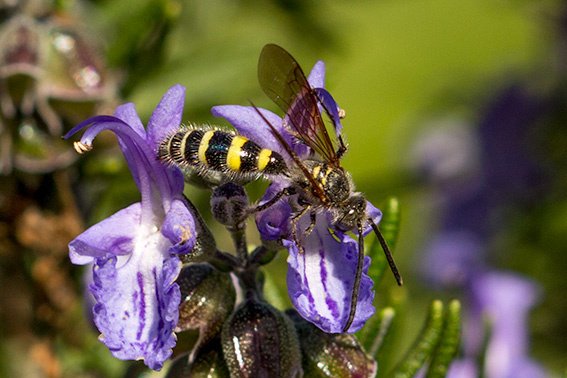
Native Beneficial Insectaries
Our project concept was originally based upon research done in South Australian vineyards, on creating native vegetation insectariums to increase the abundance and diversity of beneficial insects. The research was proven to work and cost/benefit analysis showed it to be a worthwhile IPM practice.
The concept of planting flowering native vegetation to provide nectar and habitat for beneficial insects is a simple farm practice that can be achieved with relatively low cost. The potential economic gain easily counteracts the short-term outlay with long term financial advantages with reduced labour and pesticide inputs.
Our project aimed to replicate this research, using native plant species from the relevant Ecological Vegetation Classes (EVC) to not only increase the biodiversity of beneficial insects but also increase the extent of locally appropriate native vegetation on a farm.
Four native vegetation insectarium trial sites were secured in the Yarra Valley. They included a nursery, strawberry farm, vineyard and orchard. A planting program of native indigenous insectary plants was undertaken in the Autumn of 2017 and trapping was conducted in Spring Summer and Autumn of 2017 through to 2019. Four events were held over the period of the project, including a field day and farm walk, presentation to the strawberry industry, a specialist entomology workshop for the participating landholders, and workshop tailored to the needs of the nursery industry.
Monitoring results
Over the 4 demonstration sites, 455 yellow sticky traps were analysed over 3 seasons. For each site, we collected invertebrate occurrence data for each trap location monitored (Sept, Oct, Nov, Dec, March).
In total, 97,000 invertebrates from 66 groups were detected, however the focus was on ‘beneficial species’ that reduce pest abundance such as Ladybird beetles (coccinellids). Their overall abundance increased by a factor of five. Spiders, and over 12,000 Parasitoids were collected and their abundance trebled over 3 seasons. Four times as many Lacewings were trapped. In Australia wide there are 117 families of beetles. We collected five and a half thousand beetles from 26 families. Beetle functions include predation pollination and recycling. An increase of more than four times the number of predatory bugs were detected and Rove beetle numbers doubled.
Overall, the results show that planting flowering native vegetation results in a significant increase of beneficial insects which use the vegetation as a food source and habitat.
Common Pollinator and Beneficial insects of Victoria
Photo credit Alison Hoelzer Photography




